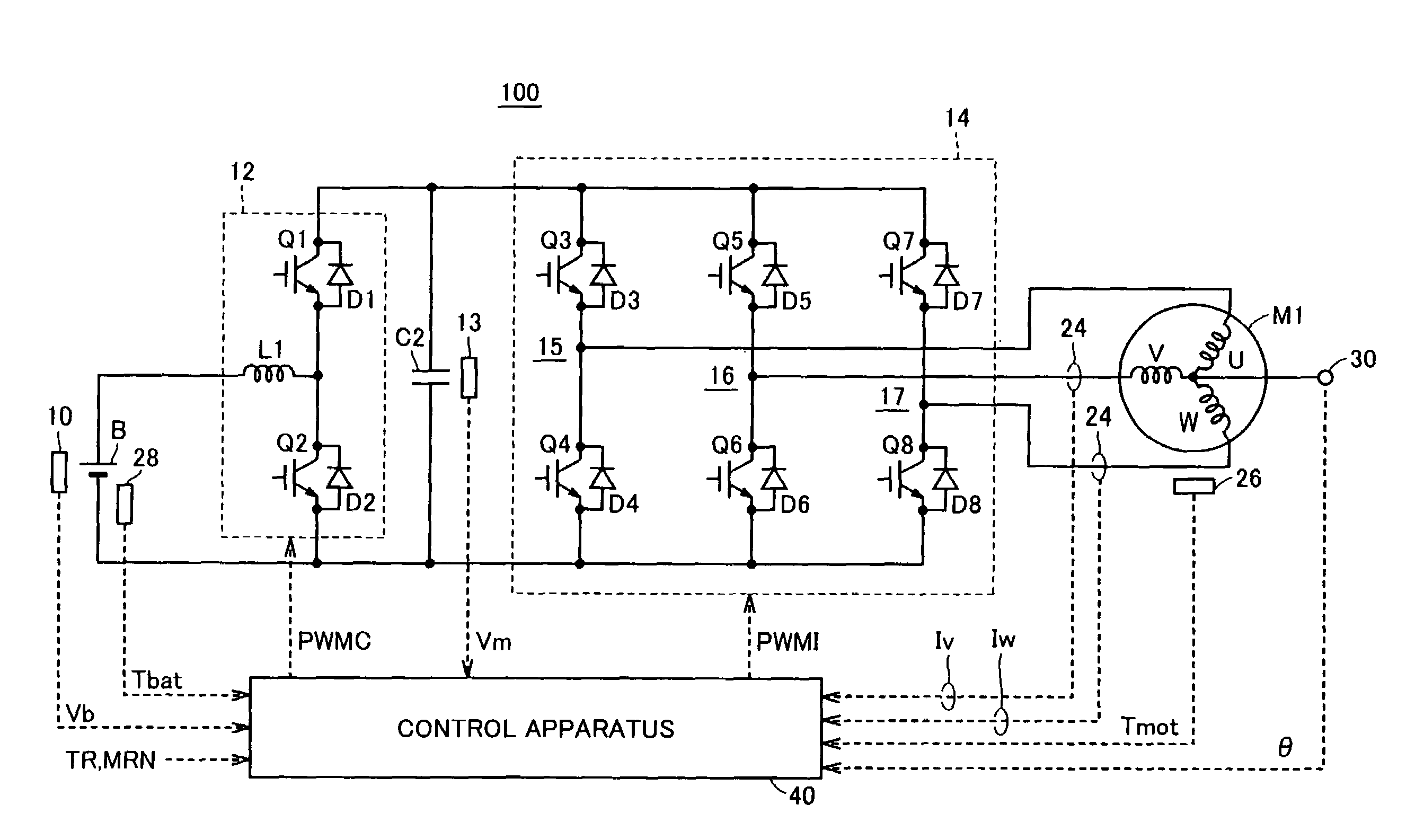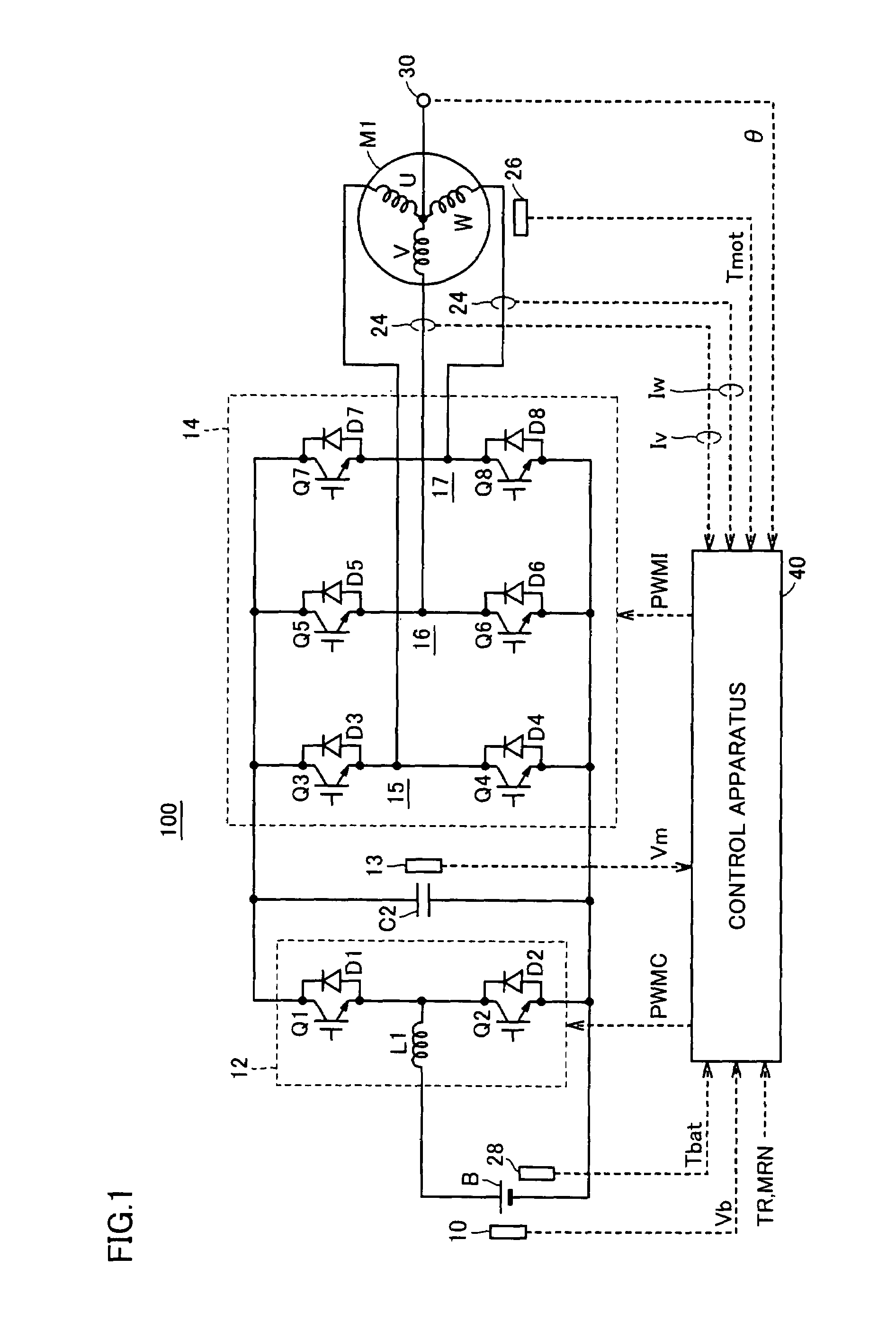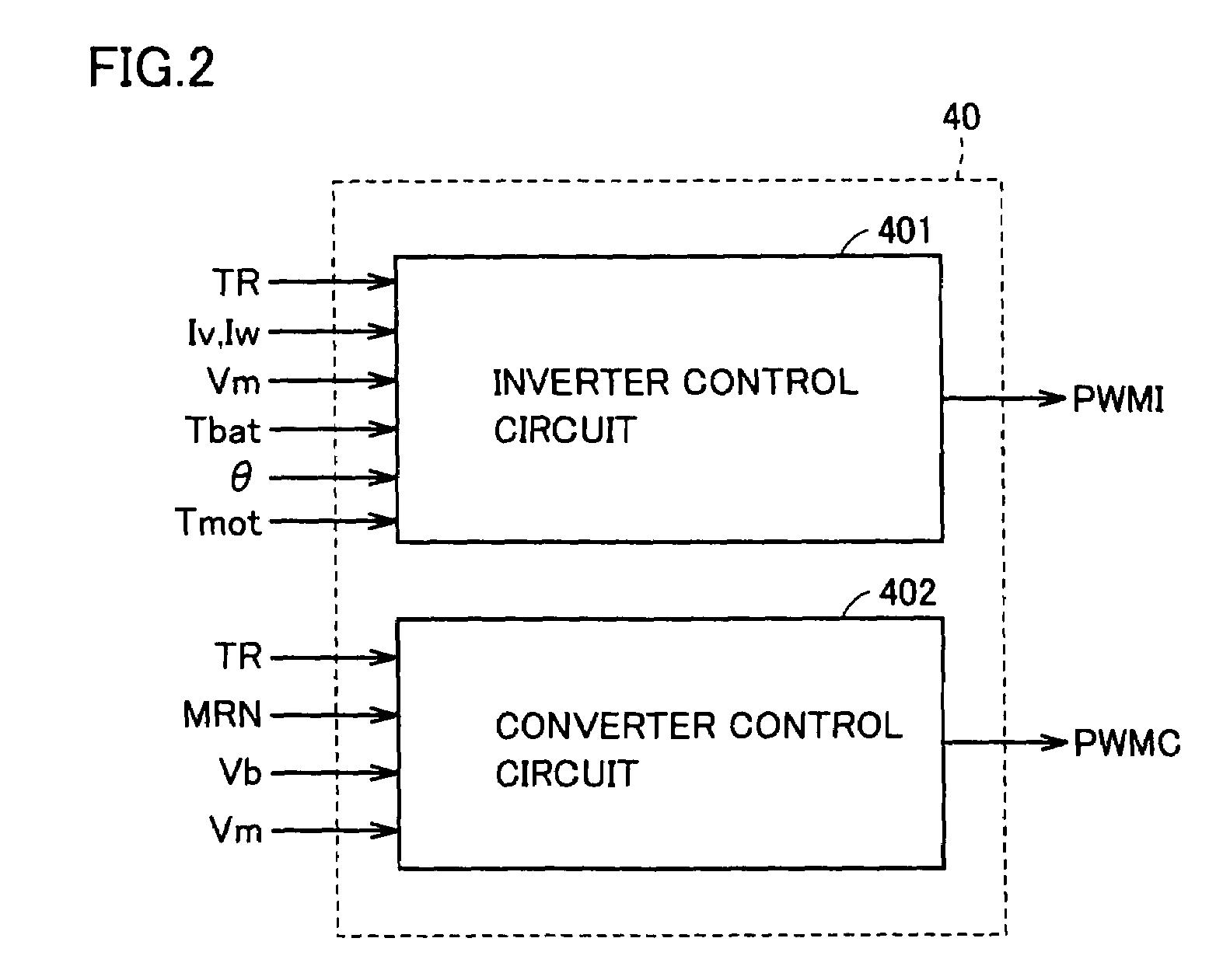Secondary battery control apparatus and secondary battery control method
a control apparatus and secondary battery technology, applied in the direction of process and machine control, emergency protective circuit arrangement, motor/generator/converter stopper, etc., can solve the problems of increasing the size of the vehicle and manufacturing costs, the strategy leaves many problems unsolved, and the temperature of the secondary battery can be quickly and easily increased, and the effect of ensuring the driving experien
- Summary
- Abstract
- Description
- Claims
- Application Information
AI Technical Summary
Benefits of technology
Problems solved by technology
Method used
Image
Examples
first modification
[0153
[0154]FIG. 8 is an illustration for showing control of AC motor M1 according to a first modification of the embodiment of the present invention.
[0155]Referring to FIG. 8, AC motor M1 according to the first modification is characterized in having, as operation points, above-described optimum operation point A and a plurality of motor loss increase points B1-B4 with the same output torque as optimum operation point A.
[0156]Specifically, each of motor loss increase points B1-B4 is set such that the phase difference between current phase θopt of optimum operation point A is gradually increased from current phase θ1 toward current phase θ4. That is, motor loss increase point B1 having the smallest phase difference has the smallest energy loss, while motor loss increase point B4 having the greatest phase difference has the greatest energy loss.
[0157]When battery temperature Tbat is lower than threshold value Tc, inverter control circuit 410 switches among the operation points of AC m...
second modification
[0159
[0160]FIG. 9 is an illustration for showing control of AC motor M1 according to a second modification of the embodiment of the present invention.
[0161]Referring to FIG. 9, AC motor M1 has, as operation points, above-described optimum operation point A and a motor loss increase point B(t) with the same output torque as optimum operation point A.
[0162]Inverter control circuit 401 according to the present modification is characterized in setting motor loss increase point B(t) such that, in addition to maintaining output torque at the requested torque, electric power P supplied from battery B to AC motor M1 becomes equal to or lower than the electric power Wout that can be output from battery B (hereinafter also referred to as the battery output).
[0163]Specifically, when AC motor M1 is driven at the motor loss increase point, as compared to electric power P taken away from battery B when AC motor M1 is driven at optimum operation point A, electric power change ΔL corresponding to c...
PUM
 Login to View More
Login to View More Abstract
Description
Claims
Application Information
 Login to View More
Login to View More - R&D
- Intellectual Property
- Life Sciences
- Materials
- Tech Scout
- Unparalleled Data Quality
- Higher Quality Content
- 60% Fewer Hallucinations
Browse by: Latest US Patents, China's latest patents, Technical Efficacy Thesaurus, Application Domain, Technology Topic, Popular Technical Reports.
© 2025 PatSnap. All rights reserved.Legal|Privacy policy|Modern Slavery Act Transparency Statement|Sitemap|About US| Contact US: help@patsnap.com



